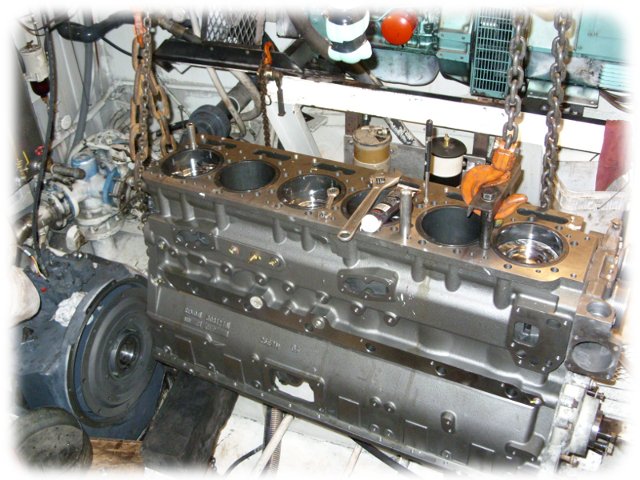
A forty thousand
dollar engine failure. Above is a Cummins N14M that I
built in the engine room of
F/V Triple Star with all
new parts
including the new cylinder block and new crank shaft. This
was a repair following a disastrous human error failure by
the vessel captain. It was an
oil
starvation failure caused by leaving the
oil pan drain plug loose and untorqued after a
pre-installation oil change during complete engine room
refitting and repowering
with the N14. The engine siezed the crankshaft on the
first trip
out from the two month refit. Pictured is the engine
repair in
progress that replaced it after the oil starvation. The
job took 3
weeks because the parts had to go in and out of the engine
room through
the entry hatch in the roof including the cylinder block.
The crank was
hoisted from below the engine into it's saddles with two
chain come
alongs while the block hung from two other chain come
alongs. This is a
brand new 20,000 dollar block for a job that cost 40,000
dollars
because a single plug was not tightened. There was an
engine
install checklist being used during the refit, and it did
not have an
item check off for "all drain plugs torqued to spec".
Three
things had to happen for this to slip by. 1) The
changer had to
forget to torque the plug, 2) nobody double check inspected
for loose
torques, and 3) the checklist did not have it
itemized. When a
mistake like this is made on an airline class of high bypass
turbofan
engine, the cost can be in the multiple millions of dollars
even if
only the engine is damaged. Being an engine wrench is
very
unforgiving. Photo by Robert Reed